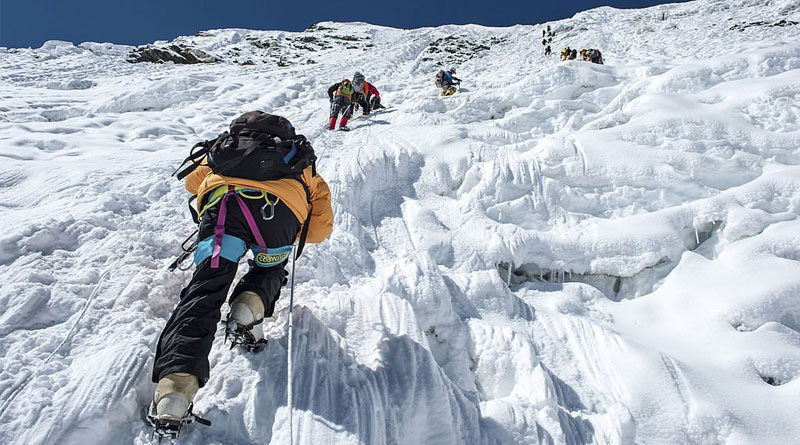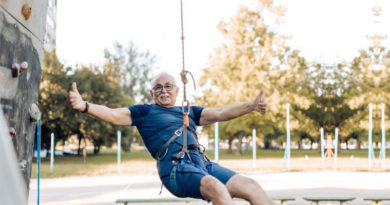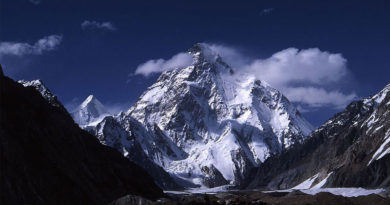Can I Climb Mount Everest With No Experience?
No, it is not recommended to attempt to climb Mount Everest with no experience. Mount Everest is the highest peak in the world and requires a high level of physical fitness, mountaineering skills, and experience to climb safely. Climbing Mount Everest is a highly technical and physically demanding task that poses significant risks to climbers. The ascent involves navigating through treacherous icefalls, crossing crevasses, and enduring extreme weather conditions. Moreover, climbing at high altitudes can also cause altitude sickness, which can be fatal if not treated promptly.
Before attempting to climb Mount Everest, it is recommended that you have significant mountaineering experience, including previous high-altitude climbs. Additionally, it is essential to have proper training and preparation, including physical fitness, technical climbing skills, and knowledge of the mountain’s environment and potential dangers. Therefore, it is highly recommended that you gain experience by climbing other peaks, taking mountaineering courses, and hiring experienced guides before attempting to climb Mount Everest.
The Risks of Climbing Mount Everest
Climbing Mount Everest is one of the most challenging and dangerous endeavors that a person can undertake. The risks of climbing Mount Everest are significant, and they can be severe. The climb involves crossing treacherous terrain, enduring extreme weather conditions, and facing the dangers of altitude sickness. The risks of climbing Everest are compounded by the fact that the peak is over 29,000 feet high, which is beyond the altitude that most humans can safely handle.
Altitude sickness
Altitude sickness is one of the most serious risks of climbing Mount Everest. When the body is unable to adjust to the lower air pressure and reduced oxygen levels at high altitudes, altitude sickness occurs. Altitude sickness symptoms include headache, nausea, and dizziness. In severe cases, altitude sickness can cause brain or lung swelling, which can be fatal.
Treacherous terrain
Another significant risk for you is Mount Everest’s treacherous terrain. The climb involves navigating icefalls and crossing crevasses, which can be unstable and difficult to navigate. Avalanches, which can be triggered by changing weather conditions or human activity, can also have an impact on the terrain. The terrain’s dangers are exacerbated by the extreme weather conditions that you face on Mount Everest.
Extreme weather conditions
Climbers on Mount Everest face significant risk due to extreme weather conditions. The peak is located in the Himalayas, where the weather can be harsh and unpredictable. On the mountain, temperatures can drop well below freezing, and winds can reach speeds of up to 200 miles per hour. Extreme weather can cause frostbite, hypothermia, and other health problems.
Risk of death
Finally, if you are attempting to reach the summit of Mount Everest, the risk of death is a stark reality. The climb is one of the most dangerous in the world due to the high altitude, treacherous terrain, and extreme weather conditions. Climbers die on Mount Everest every year due to a variety of factors such as altitude sickness, falls, and avalanches.
The Importance of Experience
Experienced climbers and mountaineers understand that climbing Mount Everest requires a high level of physical fitness, technical climbing skills, and knowledge of the mountain’s environment and potential dangers. Without these attributes, attempting to climb Mount Everest can be a recipe for disaster.
Physical fitness
Physical fitness is one of the most important aspects of climbing Mount Everest. Climbing at high altitudes puts a significant strain on the body, and climbers must be in peak physical condition to complete the ascent. Climbers who are physically fit can better acclimate to high altitudes and deal with the physical demands of the climb.
Technical climbing skills
If you are attempting to summit Mount Everest, you must also have technical climbing skills. Climbers must be familiar with navigating treacherous icefalls, crossing crevasses, and using safety equipment to avoid falls. Climbers may be unable to navigate the mountain’s terrain safely if they lack these skills.
Knowledge of the mountain’s environment and potential dangers
Climbers must also be familiar with the mountain’s environment and potential hazards. Understanding the risks of avalanches, altitude sickness, and other potential hazards can assist climbers in making informed decisions about whether or not to continue with the climb. Understanding the mountain’s environment can also assist climbers in preparing for the unique challenges that Mount Everest presents.
Previous high-altitude climbs
Finally, prior high-altitude climbs are essential for climbing Mount Everest. Climbers who have previously climbed other high-altitude mountains are familiar with the physical and mental challenges of high-altitude climbing. This experience can help them better prepare for Mount Everest’s challenges and make better decisions in unexpected situations.
The Preparation Required to Climb Mount Everest
Preparing to climb Mount Everest requires a significant amount of time, effort, and resources. The preparation process involves physical training, technical skills development, mental preparation, and obtaining the necessary equipment and permits.
Physical training
Physical training is an important part of preparing to climb Mount Everest. Climbers must be in excellent physical condition to withstand the climb’s demands. This includes increasing strength and endurance as well as acclimating to high altitudes. Many climbers hire personal trainers and coaches to assist them in physically preparing for the climb.
Technical skills
Developing technical skills is also an important part of preparing to climb Mount Everest. Climbers must have prior experience with technical climbing skills such as ice climbing and crossing crevasses. This necessitates extensive training and practice, which is why many climbers hire professional guides to assist them in developing these skills.
Mental preparation
Mental preparation is another crucial component of preparing to climb Mount Everest. Climbers must be mentally prepared to endure the physical and emotional challenges of the climb. This includes developing a positive attitude, mental toughness, and resilience in the face of adversity.
Obtaining the necessary equipment and permits
Obtaining the necessary equipment and permits is also necessary in order to prepare to climb Mount Everest. Climbers must have high-quality equipment, such as clothing, safety gear, and climbing gear. Climbers must also obtain permits and permission from the Nepalese government in order to climb the mountain.
Alternatives to Climbing Mount Everest
There are several other alternatives to climbing Mount Everest including:
Other high-altitude mountains to climb:
There are many other high-altitude mountains around the world that offer similar challenges to climbing Mount Everest. Some of these include:
- K2: The second highest peak in the world, located in the Karakoram Range on the Pakistan-China border.
- Kangchenjunga: The third highest peak in the world, located on the border of Nepal and India.
- Lhotse: The fourth highest peak in the world, located on the border of Nepal and Tibet.
- Makalu: The fifth highest peak in the world, located on the border of Nepal and Tibet.
- Cho Oyu: The sixth highest peak in the world, located on the border of Nepal and Tibet.
Trekking to Everest Base Camp
Trekking to the Everest Base Camp can be a great alternative if climbing to the summit of Mount Everest is not something you are interested in or physically capable of. The 12-day trek allows you to experience the breathtaking beauty of the Himalayas while also getting a taste of what it’s like to be on an Everest expedition.
Support other climbers or organizations
If you’re interested in mountaineering but don’t want to climb Everest, you can still help other climbers and organizations who are attempting to reach the summit. This can include volunteering, donating, or simply raising awareness about the difficulties and dangers of climbing at high altitudes. You can also donate to organizations that promote sustainable tourism and protect the environment in the Everest region.
Conclusion
In conclusion, climbing Mount Everest is a dream for many, but it is an extremely challenging and dangerous endeavor that should not be taken lightly. While it may be possible to climb Everest with no prior experience, it is highly unlikely and not recommended. Aspiring climbers should have a solid foundation of mountaineering skills, experience climbing at high altitudes, and be in excellent physical condition before attempting to climb Everest.
However, if climbing Everest is not feasible or desirable, there are many other ways to enjoy the beauty and challenge of high-altitude mountaineering, such as climbing other peaks, trekking to Everest Base Camp, or supporting other climbers and organizations. Whatever path one chooses, safety should always be the top priority when it comes to mountain climbing.




